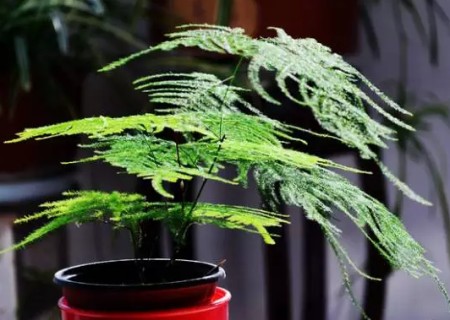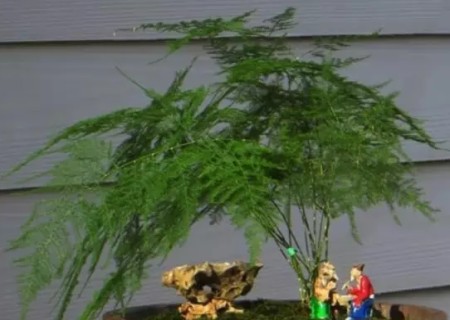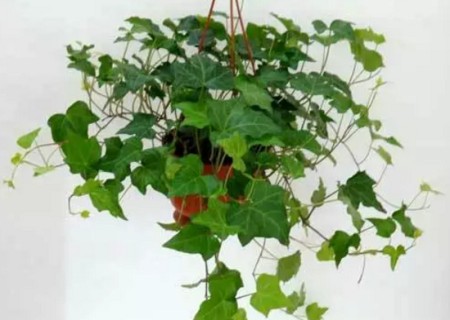How to trim asparagus bonsai
Asparagus has graceful posture, soft branches, orderly height and elegance, but if it is not pruned, it will grow taller and taller. Asparagus is a climbing plant, the root is semi-fleshy, and the growth of asparagus is very fast, after a few years, the branches will grow taller and taller, generally up to 2 to 3 meters long, or even longer.
What if asparagus grows taller? For the answer to this question, the editor's suggestion is to cut it. Asparagus is a climbing plant and grows rapidly. After a few years of cultivation, the branches will grow taller and taller. Asparagus potted plants placed at home have already been set up, and asparagus has grown taller, destroying the original shape, so the best way is to prune it. The pruning of asparagus can be carried out in any season, but it is best to do it in the slow growth period in winter, combing the dense inner branches and poorly shaped branches (showing a long vine), and maintaining the bonsai posture of asparagus clouds.

The method of controlling the growth height of asparagus:
1. Prune, cut off the old branches, so that it will always be a touch of new green (light yellow green). It is not the first floor to remove new buds (pay attention to regularly nourishing the soil and increase nourishment).
2. With that kind of shrinking rod spirit, 3/1000%, use it, but it won't feel like a welcome pine.
3. Use semi-sandy soil, which has no nutrients, so that growth can be controlled.
Asparagus is easy to grow in clusters, first, it should be combined with changing pots to add soil to trim the old and residual whisker roots, dredge the redundant stems and leaves, avoid excessive consumption of nutrients, and play the role of maintaining roots and protecting leaves; the second is to cut off the local yellowing leaves; the third is to cut off the stems and leaves that are yellow at the same time.
Asparagus with plant-shaped leafy branches dense, high and low scattered is the best. However, after 3 to 4 years of cultivation, the tall vine branches, blooming and fruiting are no longer suitable for indoor viewing and must be pruned. So pruning is very important.
1. Missing pruning of leafy branches
When the growth position of the leafy branch on the main branch is not ideal or is missing for some reason, short pruning can be carried out at the appropriate position of the main branch to force the hidden buds to germinate. In general, the height of truncation is the height of leafy branch germination, and the position of prickles on the branch is the location of leafy branch germination, and the thicker the branch is, the higher the germination rate of hidden bud is.
2. Renewal and pruning of the whole plant
If the branches and leaves of the whole plant grow poorly due to strong sunburn or basin soil, lack of fertilizer and for some unknown reason, the whole plant can be renewed. When renewing and pruning, all the leafy branches can be cut off, but we should pay attention to the parts of the branches, because they determine whether the distribution of the remaining branches is uniform. Pruning in the growing season is generally high and easy to sprout new branches, and the amount of water should be reduced appropriately after pruning, never make the basin soil too wet, otherwise it will lead to pruning failure.
3. Pruning of vine branches
Vine branches are generally weak and slender, and if you do not want to leave seeds to make them look good, they can be cut off from the roots at once; if you want to increase the number of leafy branches or fill a vacancy, they can be cut short in certain parts, and special attention should be paid to the comprehensive management of small fat when pruning.
Pruning points:
1. Asparagus is full of vitality and grows fast. Don't overprune it in its infancy, but increase its pruning in its prime.
2. You can use scissors or professional pruning work to first trim off the rotten roots and leaves on asparagus, which can reduce the loss of nutrition and better promote the growth of asparagus.
3. Then observe the overall shape of asparagus, trim according to the shape of asparagus you want, cut off the too long part, and pay attention to the principle of moderation when pruning that too much will affect the healthy growth of asparagus.
4. After the basic setting, the branch that grows too short can also be placed in the sunrise to increase light and photosynthesis to promote its rapid growth. When pruning, asparagus should be healthy and then consider the beauty of its shape.
Time: 2019-06-09 Click:
- Prev

How to trim bonsai asparagus
Does asparagus bonsai need pruning? How do you trim asparagus to look good? Asparagus is a perennial vine resident green herbaceous flower, which is called cloud bamboo, pine mountain grass and cloud bamboo mountain grass in some places. Although asparagus has the characteristic of evergreen for many years, it will cause the symptoms of yellowing of branches and leaves if it is not pruned properly during maintenance.
- Next

Ivy cutting method-step diagram
Ivy is also called Ivy. Its shape is beautiful and regular, is very suitable for beautifying home plants, especially in the wider living room, study, living room display, elegant style, simple, and with southern flavor. At the same time, Ivy is suitable for families with smoking. It can absorb carcinogens in secondhand smoke.
Related
- Fuxing push coffee new agricultural production and marketing class: lack of small-scale processing plants
- Jujube rice field leisure farm deep ploughing Yilan for five years to create a space for organic food and play
- Nongyu Farm-A trial of organic papaya for brave women with advanced technology
- Four points for attention in the prevention and control of diseases and insect pests of edible fungi
- How to add nutrient solution to Edible Fungi
- Is there any good way to control edible fungus mites?
- Open Inoculation Technology of Edible Fungi
- Is there any clever way to use fertilizer for edible fungus in winter?
- What agents are used to kill the pathogens of edible fungi in the mushroom shed?
- Rapid drying of Edible Fungi

